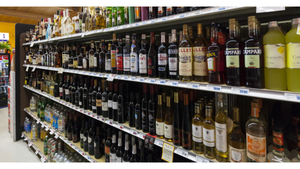VOLUME IS RISING FOR MAKERS OF ETHNIC BREADS
NORTH BERGEN, N.J. -- The American consumer's love affair with ethnic breads has quickly evolved into something more like a marriage, as the demand for new flavors and textures takes up permanent residence in homes and on dinner tables.Toufayan Bakeries, headquartered here, has become a dominant player in this specialty segment, making full-size pita bread, Pitettes and snack-size Mini Pitettes; soft,
December 14, 1998
ROBERT VOSBURGH
NORTH BERGEN, N.J. -- The American consumer's love affair with ethnic breads has quickly evolved into something more like a marriage, as the demand for new flavors and textures takes up permanent residence in homes and on dinner tables.
Toufayan Bakeries, headquartered here, has become a dominant player in this specialty segment, making full-size pita bread, Pitettes and snack-size Mini Pitettes; soft, crispy and Grissini-style breadsticks; focaccia; Mediterranean-style flatbreads; and Snuggles -- U-shaped flatbread rolls that are especially popular during the summer hot-dog grilling season.
From its beginnings as a store-front operation turning out traditional pita and flatbreads, Toufayan has grown to include two manufacturing facilities (besides the North Bergen location, a fully automated, 210,000-square-foot plant opened in Orlando, Fla., in 1983) and more than 150 employees.
Company officials say there are a number of factors behind the growth of ethnic bread sales, most of which has been fueled by new waves of immigrants who arrive in the United States bringing with them traditional food recipes. But there are also domestic factors at work.
"The world is definitely getting smaller," said Karen Toufayan, sales manager for the 70-year-old company founded by her grandfather in 1923.
"You have the average consumer coming back from a 10-day trip to Italy or France, where they've experienced focaccia or Mediterranean-style flatbread, and they want to bring it into their own homes."
Toufayan also attributed the popularity of ethnic breads to their use by restaurants, which may include the baked goods in a bread basket or as part of an appetizer or entree.
"If people like what they eat in a restaurant, they're going to look for it in the store where they shop," she said.
Because the breads are specialty items, they require a level of knowledge that may not be available to all but the most dedicated bakeries. As a result, retailers have turned to companies like Toufayan to source authentic, traditional breads that their shoppers are asking for.
Retailers themselves are also crucial to the company's ability to develop new markets for its breads. An Albertson's store in the Dallas area recently visited by Harry Toufayan, company president, is using some 100 flatbreads a day to make wrap sandwiches.
"[The sandwiches] are made in an Italian style, with some cold cuts and cheese," he said. "They are rolled up and then placed in a plastic tray and covered."
He added that the simple ingredients used in these types of breads -- flour, water, yeast and salt -- make them ideal for use as part of a signature item, such as the sandwich wraps sold by Albertson's.
"Supermarkets are constantly coming out with new ideas," echoed Karen Toufayan. "I think they're becoming more and more innovative, especially with home-meal replacement."
One of the most challenging aspects of the business, according to Harry Toufayan, has been balancing the company's tradition of manufacturing old-world breads with the need to develop new products that fit American lifestyles.
As a result, Toufayan has developed products that preserve the authenticity of its breads, while appealing to shoppers' needs. For example, the company uses the same recipe for all its pita products, but manufactures different sizes. While the full-size shells are ideal for sandwiches, the smaller Pitettes and bite-size Mini Pitettes are more suitable for appetizers or snacks.
All Toufayan products are made using modern equipment, including proofers and tunnel ovens. Lest anyone question whether the manufacturing methods affect the authenticity of the breads, Harry Toufayan pointed out that even long-established bakeries in his native Egypt have updated facilities.
"We started baking [the breads] in a traditional brick oven, manually," he recalled. "Today, even back home, nobody bakes [the breads] anymore in the old-fashioned ovens."
The company's decision to launch a focaccia bread line recently was preceded by an intense period of research and development in conjunction with a chef brought over to the company's facility from Italy. The first two varieties -- Mozarella cheese and olive oil and herb -- recently made their debut.
"We feel that our focaccia is pretty much comparable to the type made in Italy," said Harry Toufayan, who added that when the company considered adding a rosemary-infused focaccia, it conducted focus groups that asked consumers to taste different cuttings of rosemary to determine the most acceptable variety.
"We had them taste it, and come back to us and tell us what group was the best," he said.
To keep the focaccia fresh longer, it is encased in thermoformed modified-atmosphere packaging that helps to extend the shelf life of the product to 21 days. The technology creates an airtight seal by replacing oxygen inside the package with a mixture of nitrogen and carbon dioxide.
The company's breadstick line spans several sizes, flavors and styles. Soft breadsticks are produced in 4-inch and 8-inch sizes, as are crispy breadsticks. The line also includes special, 9-inch Grissini-style breadsticks.
The quality of all the company's products is maintained through an in-house quality-control office that includes a test lab that tracks moisture levels, among other critical production parameters. During the baking process, high oven temperatures cause the outside dough to dry quickly into a crusty shell. This same process, however, also causes steam to build up inside the bread, until it escapes through a rupture along the pita's seam.
Key company members have also received training through the American Institute of Baking, Manhattan, Kan., which focuses on quality control and production methods.
About the Author
You May Also Like




